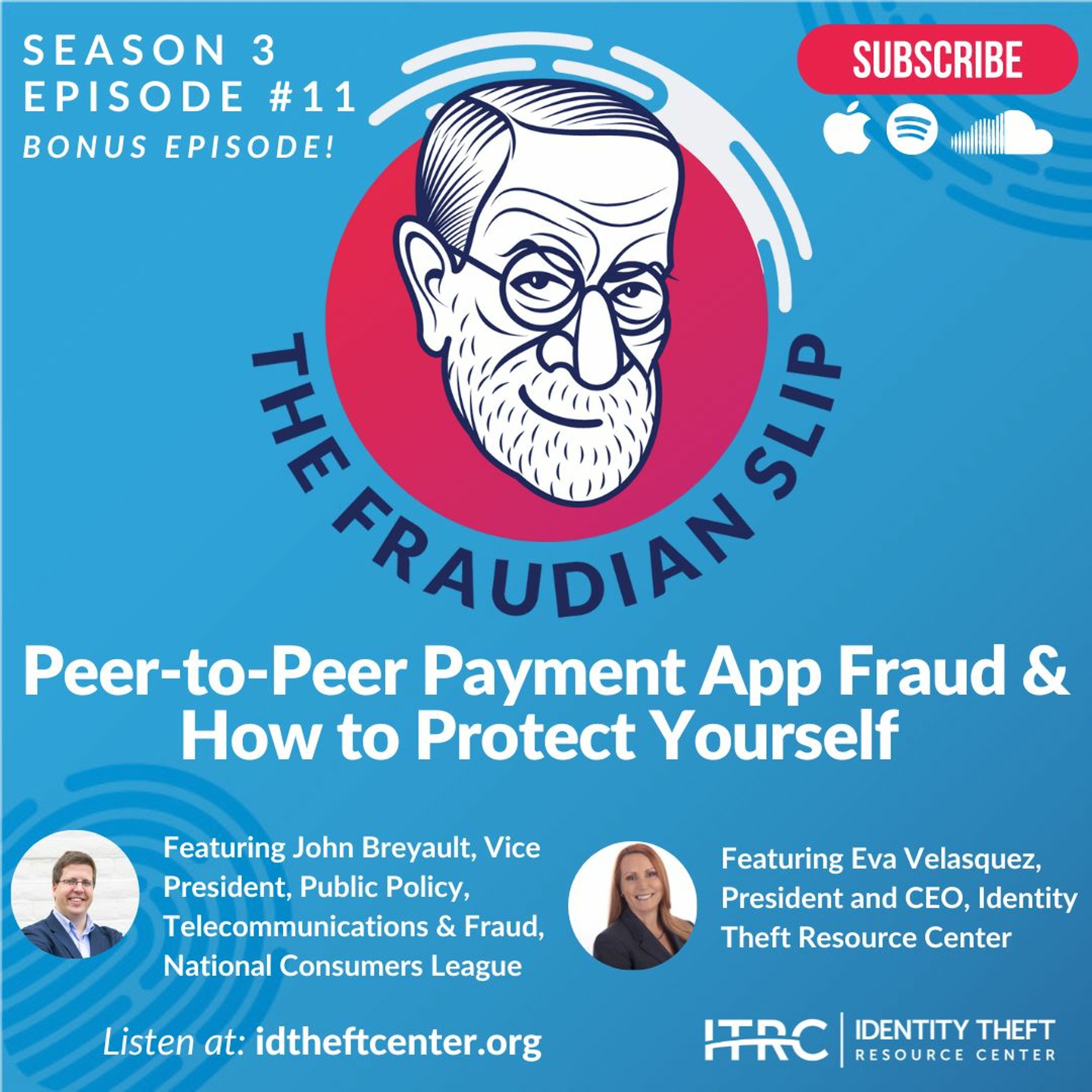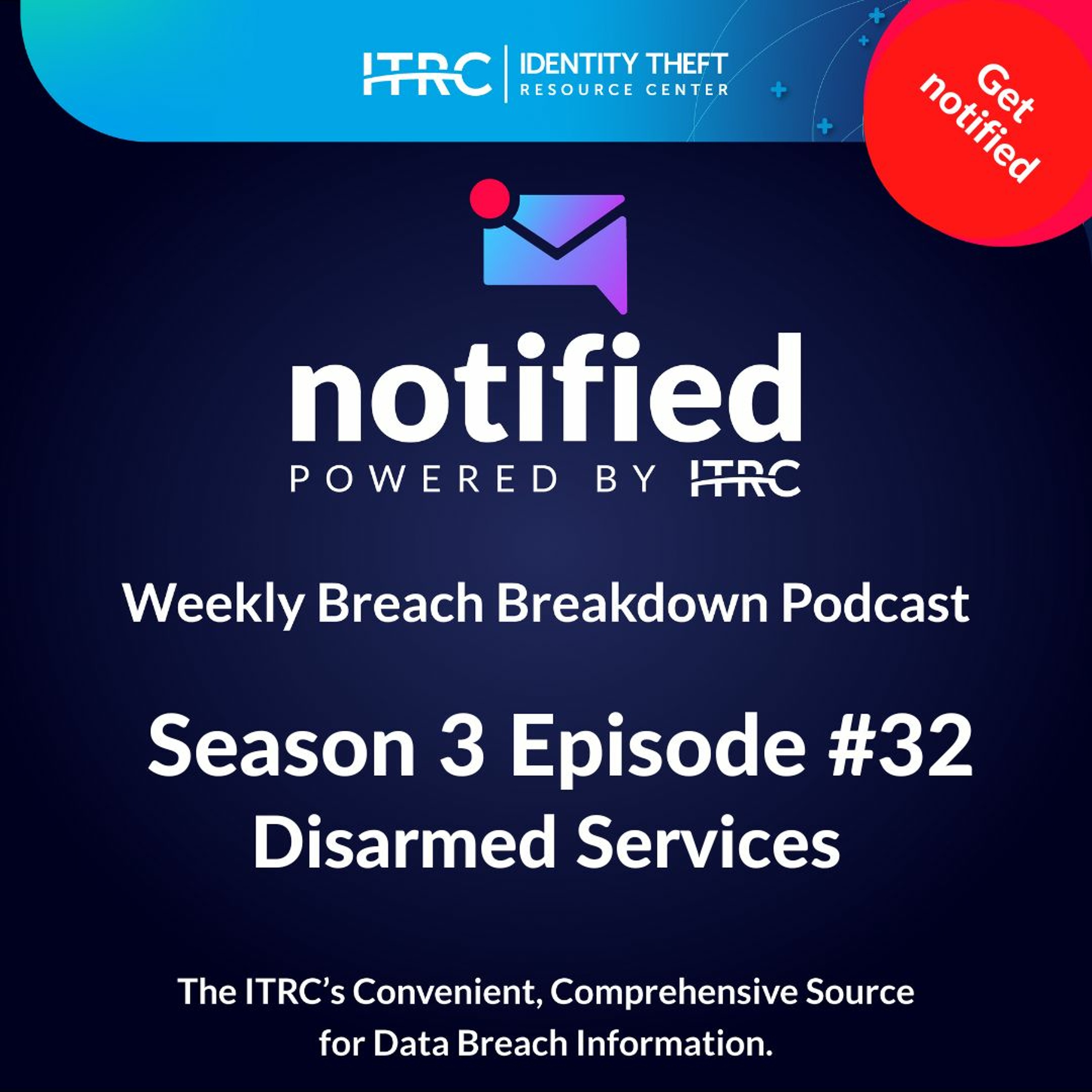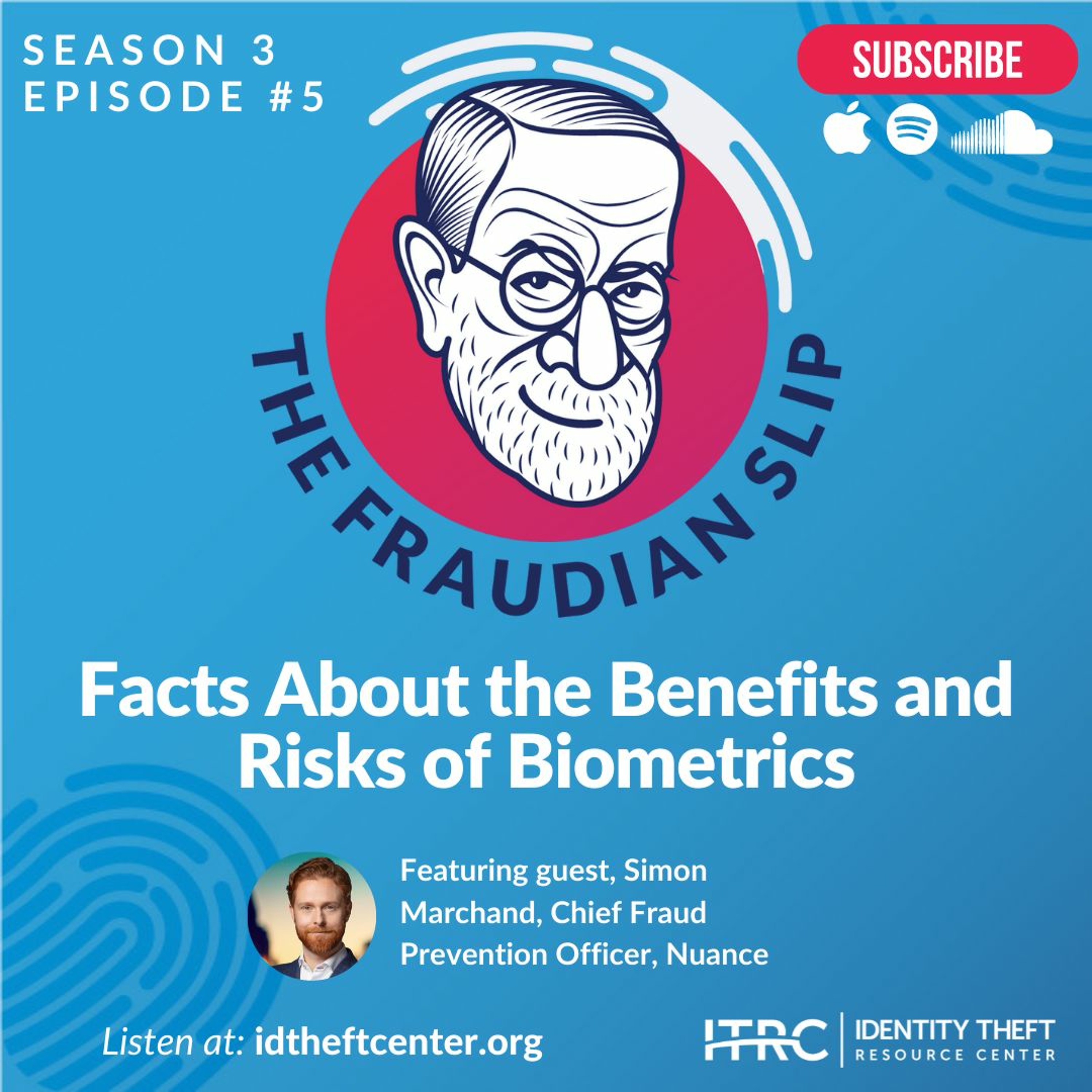Here to help us learn more about the world of Biometrics is Simon Marchand, the Chief Fraud Prevention Officer for Nuance; and the ITRC’s own CEO Eva Velasquez.
Show Notes
Follow on LinkedIn: www.linkedin.com/company/idtheftcenter/
Follow on Twitter: twitter.com/IDTheftCenter
Show Transcript
Welcome to The Fraudian Slip, the Identity Theft Resource Center’s (ITRC) podcast, where we talk about all-things identity compromise, crime and fraud that impact people and businesses. Listen on Apple, Google, Spotify, SoundCloud, Audible, and Amazon now. In this month’s episode, we will look at biometrics facts. What are the risks? What about the benefits?
The concept of identity has always been a bit, well, squishy. For most of human history, you were who you said you were. If you didn’t like your reputation, you had to move on down the road and set up shop again as someone else – and hope that no one who knew you before showed up to complain.
Over time, we added identity documents. King Henry V of England created passports to make travel easier. Later, the state issued birth certificates instead of birth records recorded in the family bible or at the neighborhood house of worship. With automobiles came drivers’ licenses, which eventually carried the first mass use of biometrics in the U.S. – a photograph of the person.
Biometrics has been around for centuries. In ancient Babylonia and China, your fingerprint was your signature. In the late 1800s, a cousin of Charles Darwin determined that no two fingerprints are alike. A new tool to solve crime was born – fingerprint matching, a biometric still in use today.
However, the rapid advance of technology in the last four decades has produced new forms of biometrics: DNA analysis, retina scans, voice matching, facial recognition and others. They all come with the potential to violate the Rule of Unintended Consequences. If we fear what we do not understand, there is a lot of misunderstanding going around these days about biometrics. What are the biometrics facts?
Here to help us develop some clarity and perspective is Simon Marchand, Chief Fraud Prevention Officer and Director of Product Management for Security and Biometrics at Nuance, an artificial intelligence company that works across many industries in the private and public sectors; mostly known for pioneering voice biometrics years ago; and the ITRC’s own CEO Eva Velasquez.
We talked with Simon Marchand about the following:
- Nuance and the role of biometrics in identity
- The state of fraud and the role of biometrics in fighting it
- Verification versus recognition
- How businesses should view and embrace biometrics
We talked with Eva Velasquez about the following:
- The rise in identity fraud
- The ITRC’s view of biometrics
- How consumers should view biometrics
You can learn more about biometrics facts and how biometrics can help reduce fraud at www.nuance.com/fraud. In particular, look for Simon’s posts on the Nuance blog.
If you think you have been the victim of an identity crime or want to avoid becoming a victim, you can speak with an expert advisor on the phone (888.400.5530), chat live on the web or send us an email during our normal business hours (6 a.m.-5 p.m. PST Monday-Friday). Just visit www.idtheftcenter.org to get started.
Be sure to join us next week on our sister podcast, the Weekly Breach Breakdown.
Listen On
Also In Season 3
-

The Fraudian Slip Podcast ITRC - P2P Fraud
Welcome to the Fraudian Slip…the Identity Theft Resource Center’s podcast where -

The Fraudian Slip Podcast ITRC - 2023 Predictions
Welcome to the Fraudian Slip…the Identity Theft Resource Center’s podcast where -

The Weekly Breach Breakdown Podcast by ITRC - Disarmed Services - S3E32
Welcome to the Identity Theft Resource Center’s Weekly Breach Breakdown for Nove -

The Weekly Breach Breakdown Podcast by ITRC - Scraping By - S3E31
Welcome to the Identity Theft Resource Center’s Weekly Breach Breakdown for Nove
